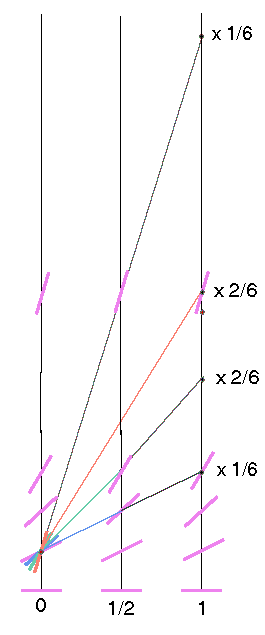
The predicted value is a linear combination, with coefficients 1/6, 2/6, 2/6, 1/6 of the values obtained by
- following the (blue) slope 1/2 line at (0,1/4). This gives y = 3/4.
- following the (green) line with the slope (1) picked up by the blue line at x = 1/2. This gives y = 5/4.
- following the (orange) line with the slope (3/2) picked up by the green line at x = 1/2. This gives y = 7/4.
- following the (black) line with the slope (7/2) picked up by the orange line at x = 1. This gives y = 15/4.
The same computational load would buy 4 iterations of Euler's method yielding 1.265.
The exact value is y(1) = (1/4)e2 = 1.85.
